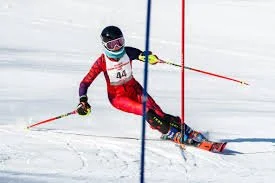

Alpine Skiing Concussion Return To Play Protocol
Concussions are a common and serious injury in alpine skiing due to the sport’s high speeds, variable terrain, and potential for high-impact falls or collisions. The Alpine Skiing Concussion Return to Play (RTP) Protocol is a medically guided, stepwise approach designed to help athletes safely return to sport following a concussion. It prioritizes the athlete’s health and long-term brain function by ensuring full neurological recovery before resuming high-risk activities.
This protocol follows international consensus guidelines, including those established in the Berlin Consensus Statement on Concussion in Sport. The RTP process begins only after the athlete is symptom-free at rest and has completed an initial period of both physical and cognitive rest. From there, the athlete progresses through increasingly demanding stages of activity—each designed to gradually stress the brain in a controlled and safe manner.
Activities begin with light aerobic exercise and slowly incorporate sport-specific drills such as controlled skiing on easy terrain. Later stages introduce more dynamic movement and full-speed practice runs. Throughout the process, the athlete must remain completely free of concussion symptoms. If symptoms return at any point, the athlete must stop activity and return to the previous stage after a period of rest.
Because alpine skiing presents unique environmental risks—including uneven terrain, variable snow conditions, and limited access to immediate medical care—it is especially important that athletes only return to full competition once cleared by a licensed healthcare provider trained in concussion management.
The goal of this protocol is not just to get skiers back on the hill but to do so in a way that protects their current and future well-being. A collaborative approach involving medical professionals, coaches, parents, and the athlete ensures the safest and most effective recovery path following a concussion.
Concussions are a common and serious injury in alpine skiing due to the sport’s high speeds, variable terrain, and potential for high-impact falls or collisions. The Alpine Skiing Concussion Return to Play (RTP) Protocol is a medically guided, stepwise approach designed to help athletes safely return to sport following a concussion. It prioritizes the athlete’s health and long-term brain function by ensuring full neurological recovery before resuming high-risk activities.
This protocol follows international consensus guidelines, including those established in the Berlin Consensus Statement on Concussion in Sport. The RTP process begins only after the athlete is symptom-free at rest and has completed an initial period of both physical and cognitive rest. From there, the athlete progresses through increasingly demanding stages of activity—each designed to gradually stress the brain in a controlled and safe manner.
Activities begin with light aerobic exercise and slowly incorporate sport-specific drills such as controlled skiing on easy terrain. Later stages introduce more dynamic movement and full-speed practice runs. Throughout the process, the athlete must remain completely free of concussion symptoms. If symptoms return at any point, the athlete must stop activity and return to the previous stage after a period of rest.
Because alpine skiing presents unique environmental risks—including uneven terrain, variable snow conditions, and limited access to immediate medical care—it is especially important that athletes only return to full competition once cleared by a licensed healthcare provider trained in concussion management.
The goal of this protocol is not just to get skiers back on the hill but to do so in a way that protects their current and future well-being. A collaborative approach involving medical professionals, coaches, parents, and the athlete ensures the safest and most effective recovery path following a concussion.
